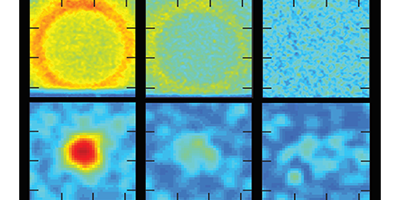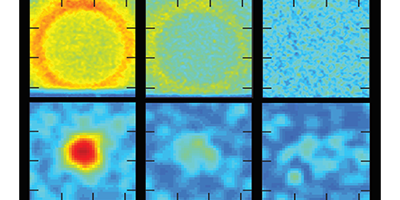Shocking Pressures
Inertial confinement fusion (ICF) attempts to initiate nuclear fusion by imploding a spherical pellet of fuel with an array of intense laser beams, generating both the pressure and temperature needed for nuclei to overcome their mutual electrostatic repulsion. In conventional ICF, compression and hot-spot formation occur in a single stage: laser pulses compress the target material, and the resulting shock wave creates a hot spot where fusion occurs.
But decoupling the compression and heating stages can achieve additional thermonuclear gain at less laser power than conventional methods. In a method known as shock ignition, a second shockwave is launched into the pellet toward the end of the compression stage. Timed correctly, the second shock wave will collide with the first after it has recoiled off the target’s center, further increasing the achieved pressures and temperatures. The OMEGA laser facility at the University of Rochester, New York, has now used its 60 ultraviolet lasers to launch shock waves of several hundred megabars, which gets amplified to pressures estimated to exceed 1 gigabar upon propagation to the center of the target.
The primary diagnostic of the OMEGA facility is the measurement of the spectral shape, spatial distribution, and temporal evolution of the emitted x rays. Aided with radiation-hydrodynamic simulations, the researchers were able to infer the shock pressures obtained. The analysis suggests that nonthermal electrons created via laser-plasma instabilities provide a significant contribution to the overall strength of the shock. The results are an encouraging step towards the application of shock ignition strategies at larger facilities like the National Ignition Facility (NIF), although experiments with target sizes comparable to those used at NIF will be needed for reliable extrapolations.
This research is published in Physical Review Letters.
–Kevin Dusling





